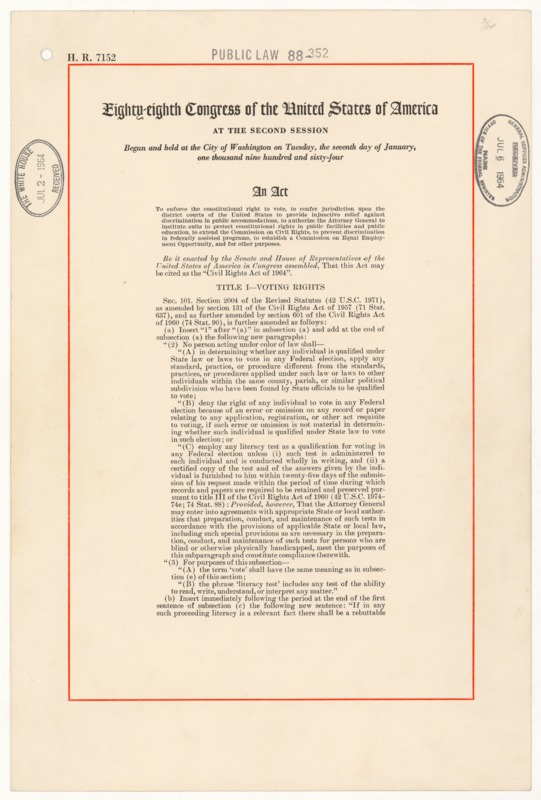Civil Rights Act of 1964
Through the cooperation of the Civil Rights Committee, the American Bar Association, and the NAACP, the Civil Rights Act of 1964 was passed. The Act was debated in the Senate for sixty days making the Civil Rights bill the longest debated bill in history.[1] Unlike its predecessors the Civil Rights Act of 1964 addressed public education reform, desegregation of public facilities and accommodations, and equal employment for all citizens. [2] However, the Civil Rights Act of 1964 was especially important for the role it played in the desegregation of schools. Title IV of the Act specifically addressed desegregation of schools throughout the nation. “Desegregation” is defined as the “assignment of student to public schools and within such schools without regard to their race, color, religion, or national origin.”[3] This order allowed students of any background to attend any school of their choosing. Title VI of the Civil Rights Act allowed the Federal Government to withhold funding from public institutions such as hospitals and schools if they did not desegregate their walls. The threat of withholding funds from schools across the nation helped to expedite the integration of schools like Mansfield High in Mansfield Texas.[4] Thanks to Title IV and Title VI of the Civil Rights Act of 1964, Mansfield was finally integrated its schools in 1966; ten years after Mansfield High’s attempted integration in 1956.
